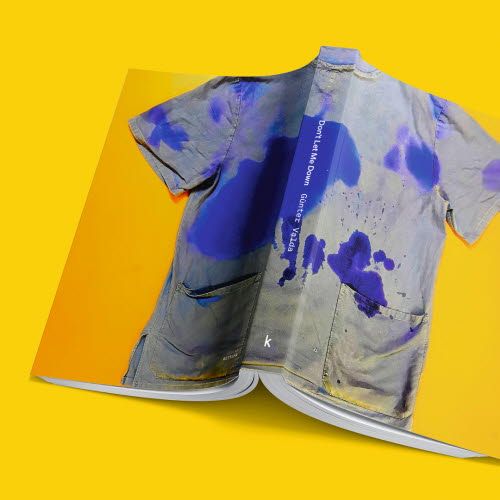"Engaging with print takes time, but it also allows to connect deeply, which I think is something all art seeks to achieve."
Created by photographer – and hospital nurse – Günter Valda, in collaboration with Vienna-based graphic designer and creative director Katrina Wiedner at onwhite.studio, Don’t Let Me Down gives a voice and puts a face to healthcare workers’ experiences on the COVID frontline. The photo book follows the lives of healthcare workers as they struggle against the rising tide of the global pandemic.
Throughout their close collaboration on Don’t Let Me Down, Wiedner and Valda never actually met in person, having already established a successful way of working remotely in a previous project.
A book is a tactile, physical object
As Wiedner says, “I have a high level of respect for Valda and his ideas. There is a great amount of trust and mutual appreciation. Günter actually delayed the publication of Don’t Let Me Down because I gave birth to my daughter, but he really wanted me to create the book, so he waited until I was back at work."

Books and print are close to Wiedner’s heart, “When a book is completed, there is this tactile, physical object that exists independently of changes in technology, that’s able to travel across the world and survive for decades, if not centuries.” Choosing the right paper is key, says Wiedner, “I’ve always wanted to create a book with Holmen TRND because it has this incredible texture and volume that I love.”
Uncoated paper can be suitable for photography
For Wiedner, the book is a “deeply emotional project and TRND’s unique tactility felt right, both for turning individual pages as well as for the overall weight and dimension of the book, which I wanted to feel bulky, but light.”
“Generally, I look for paper that is best suited to the project, considering tactile quality, printing process and the overall feel of the finished object I’m looking to achieve. But I do gravitate towards uncoated papers. They have been getting so much better since I started out as a designer, so they are now also suitable for photography projects. Sustainability is also an important aspect of choosing paper.”
"I look for paper that is best suited to the project."
As a graphic designer and and creative director on numerous art and photography projects, Wiedner is a believer in the power of print and muses on her own experience of digital consumption.
“I feel that my media consumption is an increasingly fragmented experience that involves scrolling content selected by an algorithm, without beginning or end. Print can still provide a space for self-contained narratives and complex ideas that are an expression of the particular individuality of the creator. Engaging with print takes time, but it also allows to connect deeply, which I think is something all art seeks to achieve."
Article by: Allegra Grevelius. Photo by: Günter Valda

